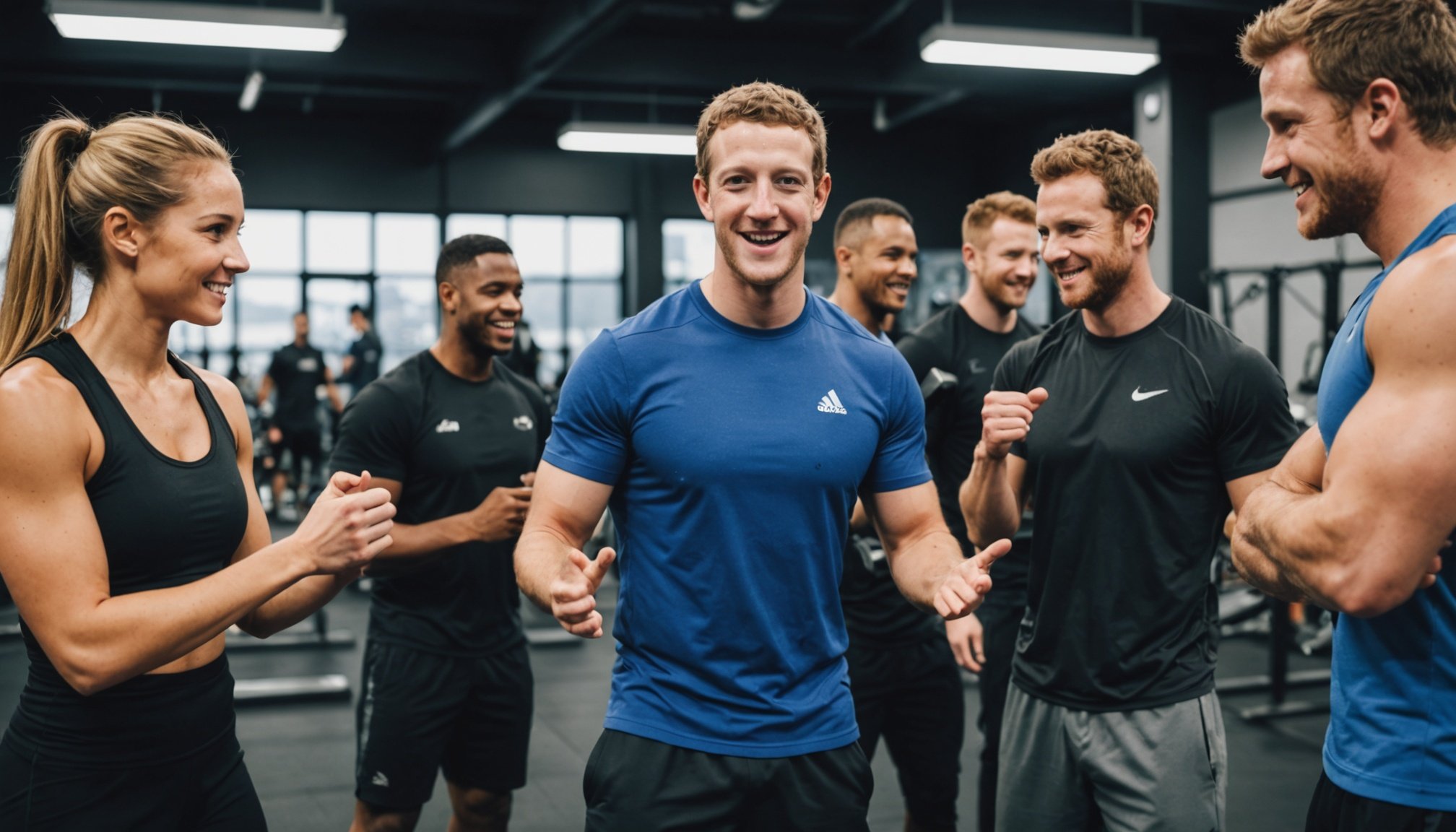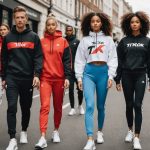Understanding Community Engagement in Gyms
Community engagement is a fundamental aspect for UK gyms, fostering a sense of belonging and commitment among members. It not only encourages regular attendance but also aids in retaining memberships. This engagement is crucial as it transforms a simple exercise space into an interactive community hub. UK gyms, however, face specific challenges in maintaining such engagement, often due to cultural diversity and varying member expectations. Overcoming these challenges is vital to maintaining a vibrant and active community within the gym environment.
One effective tool for enhancing community engagement is the use of Facebook Groups. These groups provide a virtual platform for members to connect, discuss, and share their fitness journeys, creating a supportive online community parallel to the physical gym environment. They enable gyms to maintain communication with members beyond regular gym hours, offering a continuous engagement pathway.
Topic to read : Unlocking Success with Instagram Ads: Top Strategies for Bicycle Retailers in the UK
Through strategic use of Facebook Groups, UK gyms can significantly bolster their community connection. Such groups offer unique opportunities for gyms to host virtual challenges, share fitness insights, and celebrate members’ achievements, further deepening the sense of community. Ultimately, leveraging these digital platforms can play a pivotal role in overcoming engagement barriers and building a loyal gym membership base.
Proven Tactics for Maximizing Engagement
Creating vibrant Engagement Strategies is critical for UK gyms aiming to connect with their online community. Effective Facebook Group Management can significantly enhance this connection, creating robust online interactions. Below are some strategies to foster a lively and engaging environment…
In the same genre : Maximizing TikTok Impact: Innovative Approaches for UK Sportswear Brands Using Influencer Partnerships
Creating an Inviting Atmosphere
An inviting Facebook Group is pivotal. Encourage openness by welcoming new members and fostering diverse discussions. Pin an introductory post, detailing group purpose, showcasing successful interactions, and asking for member input, promoting inclusivity.
Incentivizing Participation
To motivate member interaction, offer incentives like virtual badges or recognition for participating in group challenges. Encourage friendly competition by organising team events, promoting both camaraderie and participation. Such tactics enhance engagement, creating a dynamic gym community online.
Regularly Monitoring Group Activity
Consistently monitor group activity to track engagement levels. Tools like insights provided by Facebook can help. Evaluate the frequency of posts and responses, identifying trends, and making necessary adjustments. This not only retains dynamic interaction but also informs about the necessity of any strategic changes.
These strategies, when effectively implemented, can transform an ordinary Facebook Group into a vibrant, engaging community, reflecting the bustling atmosphere of UK gyms.
Successful Case Studies of UK Gyms
Exploring success stories of UK gyms reveals valuable insights on fostering gym engagement through effective use of Facebook Groups. A standout example includes FitLife, a gym that transformed its online community into an active wellness hub. By using targeted engagement tactics, FitLife achieved a vibrant group dynamic, demonstrating a best practice model.
FitLife’s strategy focused on weekly themed challenges and regular live workout sessions, fostering both fun and interaction among members. They maintained a consistent engagement level by encouraging members to share personal fitness milestones, turning the group into a supportive space. This approach is a practical demonstration of how gyms can leverage Facebook groups to build stronger community ties.
Another compelling case is PureGym, where a dedicated approach to Facebook Group Management was implemented. This included employing member feedback to tailor group content, ensuring relevance and sustained interest. Their strategy highlighted the importance of adapting engagement tactics based on member input for a thriving community.
Lessons learned from these case studies underscore the need to tailor strategies to meet member interests and actively involve them in the community dialogue. Gyms striving for similar success can incorporate these approaches, benefiting from enhanced engagement and a strengthened sense of belonging.
Step-by-Step Guide to Setting Up Facebook Groups for Gyms
Setting up a Facebook Group for your gym involves several important steps to ensure it becomes a vibrant platform for community engagement. The first step is Group Creation and Configuration. To initiate a group, navigate to your Facebook homepage and click on “Create.” Choose “Group,” then name it and select privacy settings that align with your gym’s needs, such as “closed” to allow only members access to posts.
Group Creation and Configuration
Ensure your group is visually appealing with a professional cover photo representing your gym’s ethos. Next, focus on Establishing Group Rules and Culture. Write clear, concise rules that encourage positive interactions. These guidelines should be accessible in the group’s description or as a pinned post.
Establishing Group Rules and Culture
Foster a welcoming environment by promoting mutual respect and inclusivity. Lastly, Promoting the Group to Current Members is crucial.
Promoting the Group to Current Members
Boost membership by introducing the group on all available channels, such as newsletters, gym posters, and during gym events. Encourage current members to join by sharing the group’s benefits, like exclusive content and tailored workout plans. This structured approach can lay a solid foundation for a thriving online gym community.
Common Challenges and Solutions
Navigating the landscape of community engagement in UK gyms often presents a set of common challenges. Cultural diversity and varying member expectations can hinder the process of creating a cohesive atmosphere in Facebook Groups. To address these challenges, gyms must adopt tailored solutions that foster inclusivity and engagement.
One primary challenge is maintaining active participation from members. To combat this, gyms can employ targeted content strategies by asking for feedback on topics that interest the community, thus making the space more relatable and engaging. Another obstacle may be language barriers within diverse groups; implementing multilingual communication options can provide a more inclusive environment.
Solutions also extend to offering educational content on fitness and wellness that appeals broadly, paving the way for meaningful discussions. Encouraging members to share their experiences can help build a supportive network.
Gyms struggling with low engagement can host exclusive virtual events tailored to the preferences of their members. These events can include live Q&A sessions, workout tutorials, or industry expert talks. Such strategies help overcome barriers and reinforce a sense of belonging, encouraging ongoing member interaction. Through these effective solutions, gyms can transform their Facebook Groups into thriving, interactive communities.
Measuring Engagement Success
Understanding how to measure success is crucial for managing Facebook Groups effectively in UK gyms. Using relevant Engagement Metrics allows gym owners to evaluate the effectiveness of their engagement strategies and make informed decisions.
Key Performance Indicators (KPIs)
Key Performance Indicators are essential for assessing community engagement. Important KPIs include the number of active members, post engagement rates, and member retention levels. Tracking these metrics provides valuable insights into how well the community is interacting and engaging with the group content.
Tools for Tracking Engagement
Several tools can help in monitoring these KPIs. Facebook’s insights offer a comprehensive overview of member activity, including post reach, comments, and participation rates. External analytic tools can offer more granular data, enhancing the understanding of member interactions within the group.
Analyzing Data for Continuous Improvement
Once data is gathered, analyzing it becomes pivotal. Use the insights to identify patterns, understand what type of content garners more engagement, and discover areas needing improvement. This analysis guides adjustments in strategy, leading to continuous enhancement in engagement and community building efforts. By focusing on these analytical elements, UK gyms can maintain a thriving, interactive online presence that complements the physical gym experience.
Visuals and Templates for Success
Incorporating visual aids and engagement templates in gym marketing can significantly boost community involvement within Facebook Groups. Visuals draw attention and make content more appealing, fostering interaction. Using well-designed graphics like workout infographics or motivational quotes can encourage members to engage and share.
Recommended Visuals
Select images that reflect the gym’s ethos and values. High-quality photos from gym events or graphics showcasing workout tips can resonate well with members. Such visuals enhance posts, making them more memorable and encouraging discussions.
Engagement Templates
Utilising engagement templates streamlines event organisation and activity planning. Templates for virtual challenges or feedback surveys can prompt member participation and create a structured approach to group dynamics. For example, a weekly workout template invites members to share their routines, promoting community interaction and support.
Effective Graphics and Content
Successful graphics often include bright colours and clear messaging to grab attention. For example, using a template for member shout-outs or achievements creates a positive atmosphere and celebrates contributions. By integrating such elements, UK gyms can elevate their digital presence, fostering a stronger sense of community engagement.











